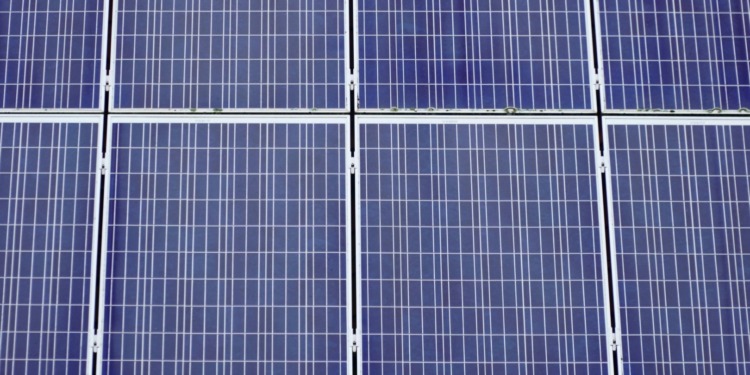A 2023 report by the National Renewable Energy Laboratory (NREL) in the United States revealed that the upfront cost of a residential solar panel system can range from $15,000 to $30,000.
While traditional panels offer a reliable source of clean energy, their bulky design and high upfront costs can limit their adoption, the significant cost being the main barrier for entry to many who are considering the switch to solar energy.
Swift Solar, a U.S.-based company, is pioneering next-generation solar technology with a focus on affordability and versatility. Their innovative approach involves using lightweight, ultra-thin perovskite films to create highly efficient solar panels that can be seamlessly integrated into various applications, from buildings and homes to aeroplanes and even cars.
Meet Swift Solar
Swift Solar was founded in 2017 by Tomas Leijtens, Giles Eperon, and Sam Stranks, who were all named in the 2020 Global Highly Cited Researchers list.
The company itself emerged as a spinout from the founders’ prior research experiences at renowned institutions like MIT, Stanford University, and the National Renewable Energy Laboratory (NREL).
The company is even supported by governmental organizations, including The U.S. National Science Foundation, The U.S. Department of Energy, and The U.S. Department of Defense.
In fact, The U.S. Department of Energy selected Swift Solar for a $7million USD award to accelerate development of their perovskite-silicon tandem technology.
This year, TIME Magazine featured Swift Solar among America’s Top GreenTech Companies of 2024, placing it as the country 15th of top sustainability-focused companies, based on its positive environmental impact, financial strength, and innovation.
The company has received various rounds of funding since its inception, with the latest being a $27 million Series A investment just last week. This brought the amount of funds raised to $44 million USD.
“Our advanced perovskite solar cells can outperform anything currently available on the market. People may not realize that solar manufacturing today is concentrated in China and Southeast Asia,” said Joel Jean, Swift Solar co-founder and CEO. “Swift Solar will bring advanced solar manufacturing back to the U.S. and strengthen our domestic renewable energy sector. This is an unprecedented opportunity to reshape the global solar industry. With this round, we’re excited to partner with world-class deeptech and strategic investors to take Swift to the next level.”
Sam Stranks, PhD, one of the founders and professor at The University of Cambridge, became a TED Fellow in 2016 and talked about perovskites in the following video:
Swift Solar’s Perovskites power
The problem stands because traditional silicone solar panels are surprisingly inefficient. The National Renewable Energy Laboratory (NREL) reports that the efficiency of commercially available crystalline silicon PV modules typically ranges from 15% to 22%. This limitation translates to the need for more panels to generate the desired amount of energy, which drives up costs due to the expensive production of these traditional panels.
Perovskites, Swift Solar’s promising solution, is a class of compounds with a unique crystal structure that makes them incredibly efficient at capturing sunlight and converting it into electricity. With this, synthetic mineral solar panels can be light, cheap and incredibly efficient.
“These perovskites can absorb sunlight better than silicon,” said Sam Stranks, Co-Founder in an interview article with Ideas.Ted. “We can absorb almost all of the sunlight with a perovskite film that is at least a hundred times thinner than silicon.”
Related articles: Solar Panel Recycling: Are the Renewables Renewable? | Sunlight to Power: Evolution and Key Facts About Solar Energy | Solar Power From Space: How Would It Work?
“The film deposited is very thin — around 500 nanometers or about 1/100th the thickness of a human hair — and it is enough to absorb a large fraction of the sunlight needed to generate electricity,” added Stranks. “The state of California requires 50 gigawatts of power, for example. To make enough solar panels, you’d only need half an Olympic swimming pool’s worth of perovskite ink.”
Currently, Swift Solar’s products aim to be applied in three areas: Aerospace, Vehicles, and Building materials.
In the following graphic, found on Swift Solar’s website, we can see the perovskite tandem technology:
Looking ahead: more efficient solar panels
Perovskite technology holds immense promise for the future of solar energy. With its potential for increased efficiency, lower production costs, and wider application possibilities, Swift Solar is leading this exciting development. However, some challenges remain.
The long-term durability and stability of perovskite solar cells under outdoor conditions are still under investigation. Additionally, the environmental impact of perovskite production needs to be thoroughly assessed since the material was only discovered recently in 2009.
Despite these challenges, Swift Solar’s approach offers a compelling vision for a future powered by clean, affordable, flexible and versatile solar energy.
Editor’s Note: The opinions expressed here by the authors are their own, not those of Impakter.com — Featured Photo Credit: Jan Van Bizar.











